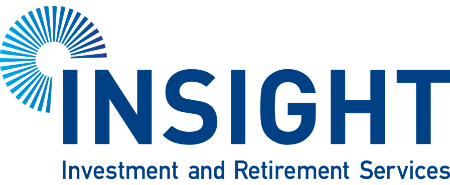Happy New Financial Year Everyone
In the current times of financial market uncertainty, I thought I’d quickly share some insights to provide some confidence, and with the new financial year commencing there are several legislative changes coming into force today. One in particular that I want to expand on is the change to the work test for superannuation contributions. This is relevant for anyone over 65 but under 75 years of age.
Look Back. Now Look Forwards
The 1st of July always brings cause for a look back at the previous 12 months and unlike the previous few years in the financial sector this past period was not a particularly pleasant one. Markets are down, inflation, that is the general cost of living including food and fuel, is rising and so are interest rates, property is experiencing some nervous moments wondering how far interest rates will rise and there are still overseas supply issues due to COVID and the was in the Ukraine.
It’s so easy to get caught up in the short-term losses and I certainly do understand how for many of you that is a major concern. But as many of you have been clients for quite a while you will have experienced these nervous times in the past and then seen how markets bounce back. But let’s quickly look to see this in action.
As shown in the following graph, local (purple line) and global (pink, blue and orange lines) markets are generally down over the past 12 months by about 10%. Some foreign markets are down more. They are not nice graphs in reality. (Surprisingly though the UK market (pink line) is up by almost 4%!!)

(Source: https://finance.yahoo.com.au, 1/7/2022)
Now let’s go back to 2017 and look forwards 5 years. The graph below shows that our market is up over 17%, the US is up over 45% in that period. So despite the current 12 month performance, overall returns are still positive. And consider the dip in early 2020 and how quickly and strongly markets rebounded and went on to new heights.

(Source: https://finance.yahoo.com.au, 1/7/2022)
When periods of uncertainty occur and people lose the long-term focus, the notion of moving to cash is high on their agenda. The following graphic shows why this is a losing strategy. Since 2008, remember the GFC, cash has had an average return of 2.9%, the lowest of all asset classes. Sure, it has never suffered a loss, but the average and maximum returns are about half of the next asset class. And since the cash rate has been low it has mostly featured in the bottom half of asset class annual returns. Also, notice that no asset class is at the top every year.

Source: Vanguard Asset Class Tool, 1/7/2022
So while it may feel like a winning strategy at the time to preserve capital the next question generally is when should you move from cash to one the other asset classes when you see share markets moving up. If only I had a crystal ball to answer that one. The answer is I don’t know. Markets are volatile on a daily basis but over the long term they produce a return higher than cash. So the longer you are in the market, the more opportunity there is to benefit from the longer term returns.
In our current portfolios, we manage the risks of losses (and gains) to your individual risk profile. We blend all asset classes together to provide a portfolio that will over the longer term provide an expected return aligned to your risk profile. Some years will be great, and others will not.
The takeaway is that over the longer-term shares and/or a well-diversified portfolio, will provide the best return, even though it may be a nervous ride at times. Stay the course!!!
Changes to Work Test Requirements
From 1 July 2022, superannuation members under 75 years of age will no longer have to meet the work test requirements to make superannuation contributions. This includes personal concessional and non-concessional contributions and salary sacrificed contributions. These members may also be able to access the bring-forward provisions. The work test will only need to be met if the member makes a personal contribution AND wishes to claim a tax deduction for it. (Source: http://ato.gov.au, 1/7/2022)
In addition to being able to increase their superannuation balances, the removal of the work test enables members to modify the components of their superannuation balances through recontribution strategies. This enables a non-tax beneficiary (your adult children or estate) to receive a higher portion of the funds tax-free, pay less tax on the lower taxable component and hence receive a higher amount.
Note: The taxable and tax-free components are only applicable to a death benefit received by a non-tax dependant (your adult children or estate). If the member makes a withdrawal after age 60 there is no tax paid. If the member benefit passes to a spouse or other tax dependant, there is no tax payable. But if an adult child or the estate receives the benefit, tax is payable on the taxable component.
All members superannuation funds are made up of a taxable and tax-free component. (Some also have an untaxed component but that is beyond the scope of this article). Personal contributions, Superannuation Guarantee contributions and salary sacrifice contributions make up the taxable contribution while non-concessional contributions make up the tax-free component. It becomes obvious then that the majority of a person’s superannuation fund will be taxable because it has been paid for by employers while they were working.
The proportion of each component in the fund remains constant, unless a contribution of one type or the other is made. If a personal contribution is made, the taxable portion will rise. If a non-concessional contribution is made, the tax-free portion will rise.
A recontribution strategy allows a person, who meets one or more condition of release, to withdraw some or all of their superannuation and re-contribute it back into the same or another fund as a non-concessional contribution.
As any withdrawal is a combination, in proportion, of the taxable and tax-free components, the proportion of each does not change upon the withdrawal. However when the amount is recontributed back into the fund, the taxable portion reduces and the tax-free portion rises. Over a number of years, this strategy can significantly reduce the taxable component, and hence increase the total amount received by a non-tax dependant.
I have already discussed this strategy with many of you since this was announced earlier in this year. Now that the legislation has been enacted I will be ensuring that during our reviews this financial year we will discuss and, where appropriate, implement a strategy appropriate for you. There are many factors that affect the strategy so a personalised approach is necessary. One particular strategy does not suit everyone.
As this is a significant change is legislation policy, I would encourage you to share this with friends who are over 65 years of age and encourage them to get in touch with me if they do not have a financial adviser.

